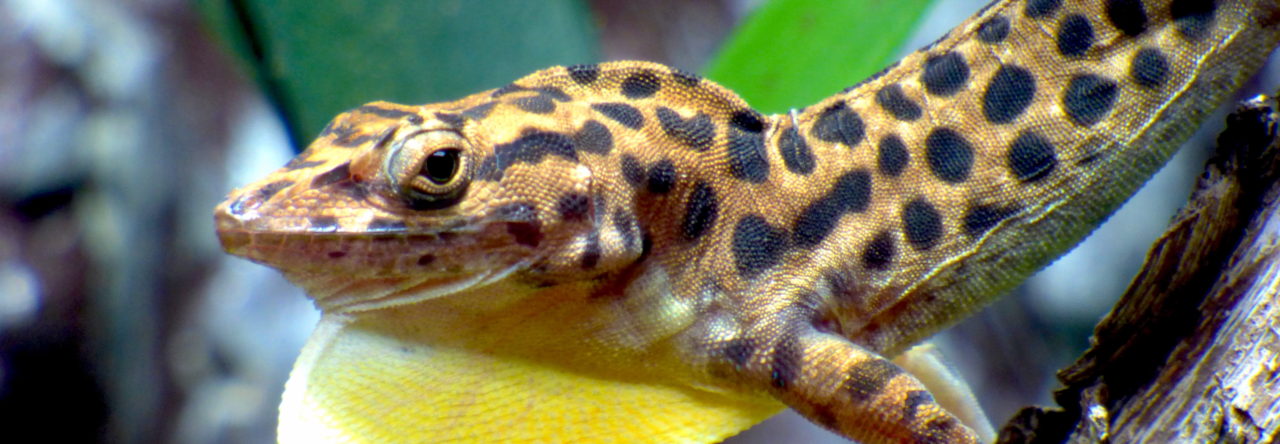![]() Almost all Caribbean anoles are descendants from a single colonizing species, whose descendants now occupy all of the Greater Antilles, the Lesser Antilles south through Dominica, and many other islands. Almost all of the remaining species are members of the roquet clade, occupying the southern Lesser Antilles and descended from a South American colonist. As we all know, these species have been extensively studied.
Almost all Caribbean anoles are descendants from a single colonizing species, whose descendants now occupy all of the Greater Antilles, the Lesser Antilles south through Dominica, and many other islands. Almost all of the remaining species are members of the roquet clade, occupying the southern Lesser Antilles and descended from a South American colonist. As we all know, these species have been extensively studied.
But colonization of Caribbean islands has occurred more than just these two times. Some other islands have been colonized by different colonists. None of these invasions has led to much in the way of evolutionary radiation and these species–in each case the only anole on the islands they occupy–have been little studied. We’ve previously discussed one such colonization, A. lineatus on Aruba and Curaçao. In addition, islands in the Pacific (yes, the Pacific!) have twice been colonized, leading to A. agassizi on little known Malpelo and A. townsendi on Cocos Island (incidentally, the island said to have beeen the inspiration for Isla Nublar in Jurassic Park).
And, finally, there are the presumed sister taxa, A. pinchoti and A. concolor, on the Colombian islands of Providencia and San Andrés. A smidgeon of research has been conducted previously on their ecology, and now a new paper in the South American Journal of Herpetology has examined their morphology. Calderón-Espinosa and Barragán Forero measured museum specimens of these species and compared them to published data on a variety of other Caribbean anoles. They found that neither species is a good match for any of the Greater Antillean ecomorphs, but that they are most similar to trunk-ground or trunk-crown anoles. By comparison, anoles of the Lesser Antilles are also most similar to these two ecomorphs. Anolis concolor attains an intermediate body size, similar to Lesser Antillean species that occupy islands on which they are no other anole species. By contrast, A. pinchoti is smaller and more similar to the smaller Lesser Antillean species on two-species islands.
Anoles are renowned for their convergent evolution. Further comparison of the many cases in which anoles have colonized relatively small islands should prove interesting.
M. L. Calderón-Espinosa and A. Barragán Forero (2011). Morphological Diversification in Solitary Endemic Anoles: Anolis concolor and Anolis pinchoti from San Andrés and Providence Islands, Colombia South American Journal of Herpetology
- Singapore National Parks Studying Impact of Introduced Brown Anoles (and the Greenhouse Frog) - May 2, 2025
- Evolution in Real Time on Lizard Island - March 23, 2025
- Spider Snags Adult Anolis osa - March 22, 2025



Leave a Reply